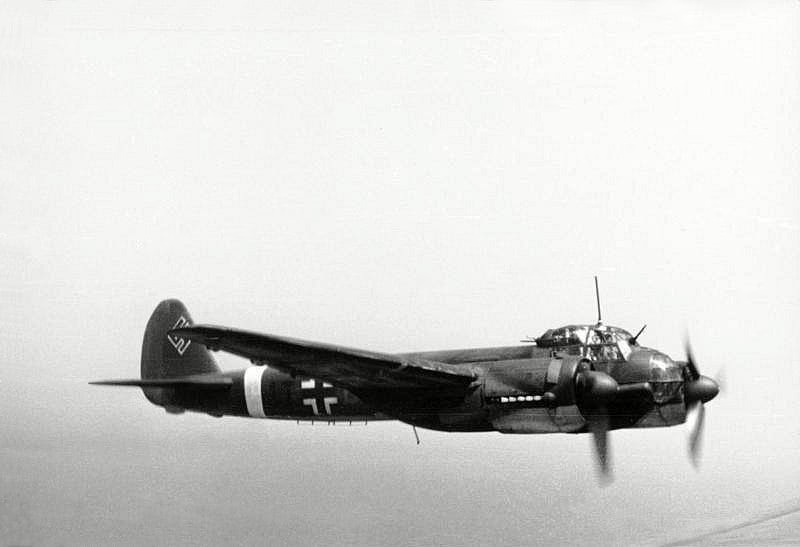Junkers Ju 88 History
The most adaptable German warplane of World War 2, and among the most widely used, the Junkers Ju 88 was evolved to a 1937 requirement issued by the Reichsluftfahrtministerium (RLM) for a fast, well-armed multi-purpose aeroplane. Originally prototyped as a civilian transport, the Ju 88 could carry three to six crewmembers and a variety of armaments. The first prototype (D-AQEN) was flown on 21 December 1936, powered by two 1,000 hp DB600A in-line engines. The second prototype was essentially similar, but in the third the powerplant was a pair of Jumo 211A engines, and the Jumo was to power the majority of Ju 88s subsequently built.
The characteristic multi-panelled glazed nose section first appeared on the fourth Junkers Ju 88 prototype. A pre-series batch of Ju 88As were completed during the summer of 1939, and delivery of the first Ju 88A-1 production models began in September. The A series continued, with very few gaps, through to the A-17, and included variants for such specialised roles as dive bombing, anti-shipping strike, long range reconnaissance and conversion training. Probably the most common model was the A-4, which served both in Europe and North Africa. This was the first Junkers Ju 88 version to incorporate modifications resulting from operational experience gained during the Battle of Britain; it had extended-span wings, Jumo 211J engines, increased bomb load and defensive armament.
Twenty Ju 88A-4s were supplied to Finland, and other to the Regia Aeronautica. The Ju 88B, evolved before the outbreak of war, followed a separate line of development to become the Junkers Ju 188, and the next major Junkers Ju 88 production model, chronologically, was the Ju 88C fighter series. The Ju 88D (over one thousand eight hundred built as D-1, D-2 and D-3) was a developed version of the A-4 for the strategic reconnaissance role. Next bomber series was the Ju 88S, powered by 1,700 hp BMW 801G radials (in the S-1), 1,810 hp BMW 801TJs (S-2) or 1,750 hp Jumo 213E-1s (S-3). Apart from powerplant, the S sub-types were basically similar to one another, and differed from the earlier bombers in having a smaller, fully rounded glazed nose. They were less heavily armed, and carried a smaller bomb load, but performance compared with the A and D series considerably better.
Production of bomber and reconnaissance variants of the Junkers Ju 88 totalled ten thousand seven hundred and seventy-four, just over 60 per cent of the overall total. Towards the end of the war many Ju 88 airframes ended their days rather ignominiously as the explosive-laden lower portion of the Mistel composite attack weapons, carrying a Messerschmitt Bf 109 or Focke-Wulf Fw 190 pick-a-back fashion to guide them on to their targets. This highly manoeuvrable, well-built aircraft was one of the best in the Luftwaffe’s arsenal. However, its most famous role was as a night-fighter against Allied bombers.








